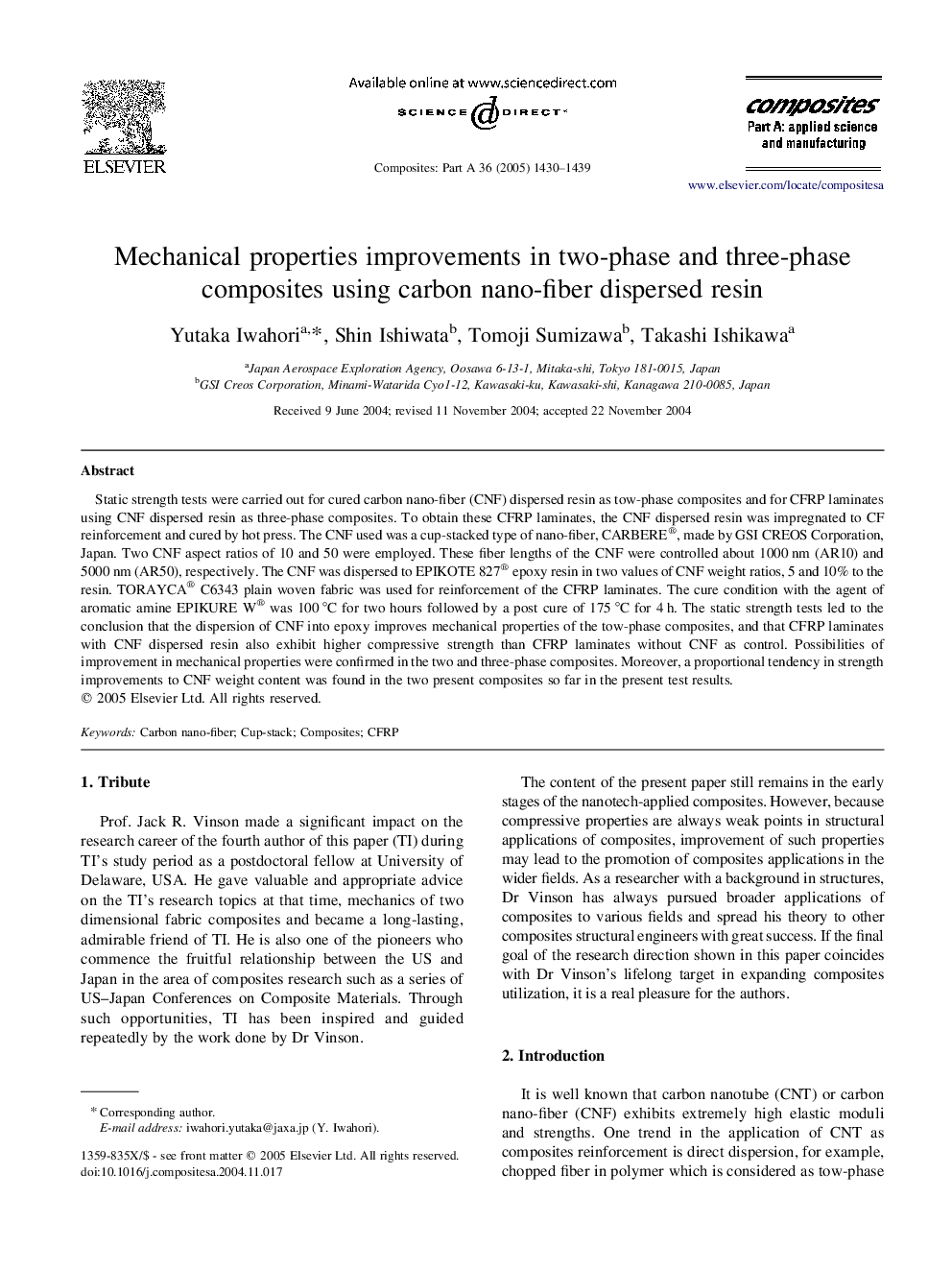| Article ID | Journal | Published Year | Pages | File Type |
|---|---|---|---|---|
| 10628184 | Composites Part A: Applied Science and Manufacturing | 2005 | 10 Pages |
Abstract
Static strength tests were carried out for cured carbon nano-fiber (CNF) dispersed resin as tow-phase composites and for CFRP laminates using CNF dispersed resin as three-phase composites. To obtain these CFRP laminates, the CNF dispersed resin was impregnated to CF reinforcement and cured by hot press. The CNF used was a cup-stacked type of nano-fiber, CARBERE®, made by GSI CREOS Corporation, Japan. Two CNF aspect ratios of 10 and 50 were employed. These fiber lengths of the CNF were controlled about 1000 nm (AR10) and 5000 nm (AR50), respectively. The CNF was dispersed to EPIKOTE 827® epoxy resin in two values of CNF weight ratios, 5 and 10% to the resin. TORAYCA® C6343 plain woven fabric was used for reinforcement of the CFRP laminates. The cure condition with the agent of aromatic amine EPIKURE W® was 100 °C for two hours followed by a post cure of 175 °C for 4 h. The static strength tests led to the conclusion that the dispersion of CNF into epoxy improves mechanical properties of the tow-phase composites, and that CFRP laminates with CNF dispersed resin also exhibit higher compressive strength than CFRP laminates without CNF as control. Possibilities of improvement in mechanical properties were confirmed in the two and three-phase composites. Moreover, a proportional tendency in strength improvements to CNF weight content was found in the two present composites so far in the present test results.
Keywords
Related Topics
Physical Sciences and Engineering
Materials Science
Ceramics and Composites
Authors
Yutaka Iwahori, Shin Ishiwata, Tomoji Sumizawa, Takashi Ishikawa,
